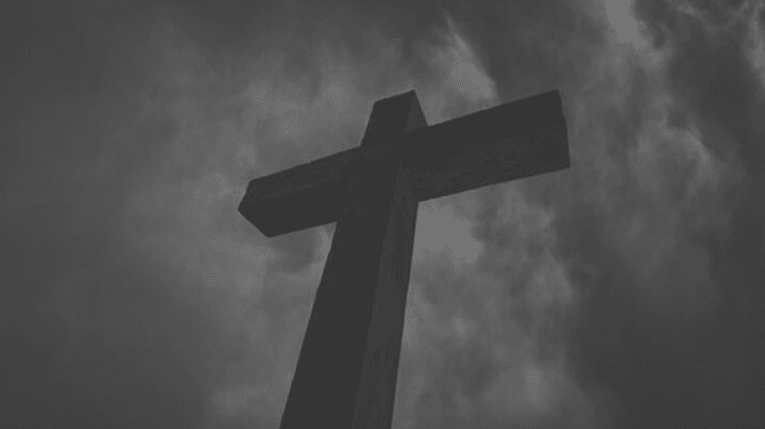
Dr. Ligon Duncan
- Dr. Ligon Duncan says for almost two thousand years Christians have been strengthened by the hope of Jesus’ resurrection.
On Sunday morning, April 5, AD 33, two women named Mary came to the garden tomb of Jesus.
The previous Sunday (March 29), Jesus, a thirty-something-year-old “itinerant rabbi, prophet, and healer from Galilee” had entered Jerusalem riding a donkey in the manner of King Solomon, to shouts of Hosanna, declaring himself to be the prophesied Son of David, the Messiah, the long-awaited King of Israel (2 Samuel 7:12-16, Matthew 21:4-11).
The next day, Monday, March 30, Jesus electrified the crowds and challenged the religious authorities by cleansing the Temple, overturning the tables of the moneychangers in righteous protest of their sacrilege and corruption in the House of God, which he called “My Father’s House.” Many of the common people admired what he was saying and doing, but the chief priests, scribes and religious leaders were deeply offended by his teaching and claims. They were already plotting what to do with him.
Tuesday, March 31, while teaching in the Temple, Jesus engaged in a series of debates/discussions with various Jewish religious leaders, besting and silencing the Pharisees, Herodians, and Sadducees. He also taught parables that depicted God’s judgment on them, which further infuriated them. As Jesus and his disciples left the Temple that evening to go to the Mount of Olives, Jesus predicted the destruction of the Temple. The conflict was escalating.
On Wednesday, April 1, Jesus again teaches in the Temple area, and the crowds hang on his every word. Meanwhile, the elite religious leaders are actively planning to capture and kill Jesus, but a consensus emerges among them that they need to wait until after the Passover festival is over, lest they enflame the populace.
Thursday, April 2, Jesus and his disciples made preparations for the Passover meal to be held that night. That morning, Jesus told his disciples “My time is at hand.” In other words, Jesus knew that his death was imminent. He had been warning and teaching his disciples about this for a long while, but they struggled to fully understand. That night, which by Jewish reckoning would have been 15 Nisan (the day of the Passover Feast, because Jews counted their days nightfall to nightfall), Jesus and his disciples gather for the Passover, the Last Supper, somewhere in Jerusalem.
During the meal, Jesus told his disciples that he was going to die as a covenantal sacrifice the next day, and that his death was going to fulfill the old covenant and bring about the new covenant. He was indeed, “the Lamb of God, come to take away the sins of the world.” One of his own disciples (Judas) left from the Upper Room to go betray him to the Jewish authorities, who had now decided to arrest him under cover of darkness. After a long evening of teaching and prayer, Jesus and his disciples go to the Garden of Gethsemane.
Friday, April 3 (still 15 Nisan according to the Jewish calendar), wee in the hours of the morning, Jesus is betrayed by Judas and arrested by the Jewish religious authorities. He is questioned in the middle of the night by both the former and current high priest, and illegally tried, and convicted right at dawn. The Council votes to recommend him for the death sentence to the Roman ruler, Pilate. Jesus is beaten and abused, then sent to Pontius Pilate, Roman Governor of Judea. Pilate sends him to Herod (Antipas) who eventually sends Jesus back to Pilate. In late morning, Jesus is sentenced to be crucified, and is brutally beaten by the Roman soldiers (many of the convicted did not survive the scourging). He hangs on a Roman cross for about six hours, and dies. His body is taken down before sundown, and given to a wealthy follower named Joseph of Arimathea, who hastily arranges for his burial, and with the help of the two Marys, prepares his body for the tomb.
Saturday, April 4, the Jewish leaders make a request of Pilate that the tomb be guarded, because of Jesus’ his claims that he would rise again on the third day. They must have been very fearful to do this on a high Sabbath. The tomb is thus put under guard.
And that brings us back to Sunday, April 5, AD 33. One of the oldest extant Christian writings tells us what happened that day.
Now after the Sabbath, as it began to dawn toward the first day of the week, Mary Magdalene and the other Mary came to look at the grave.
(Matthew 28:1-10, circa AD 50-60)
And behold, a severe earthquake had occurred, for an angel of the Lord descended from heaven and came and rolled away the stone and sat upon it. And his appearance was like lightning, and his clothing as white as snow. The guards shook for fear of him and became like dead men.
The angel said to the women,
“Do not be afraid; for I know that you are looking for Jesus who has been crucified.
He is not here, for He has risen, just as He said.
Come, see the place where He was lying.
Go quickly and tell His disciples that He has risen from the dead;
and behold, He is going ahead of you into Galilee, there you will see Him;
behold, I have told you.”
And they left the tomb quickly with fear and great joy and ran to report it to His disciples.
And behold, Jesus met them and greeted them.
And they came up and took hold of His feet and worshiped Him.
Then Jesus said to them,
“Do not be afraid; go and take word to My brethren to leave for Galilee, and there they will see Me.”
Those two devoted women, who came only in hopes of further preparing the dead body of Jesus, were greeted by so much more: the after-effects of an earthquake, an empty tomb, terrified guards, a dazzling angel, and a resurrected Savior. The angel testifies: “He is Risen!” And the risen Jesus himself comforts them: “Do not be afraid.”
And so, for almost two thousand years Christians have been strengthened by the hope of His resurrection, the message “He is risen,” and the comfort “Do not be afraid.”
You may have come to this Easter Sunday like those women. Dutiful, but downcast, unhopeful, expecting no miracle. But the same surprising hope awaits you, the same stirring message greets you, and the same living Savior assures you. “Do not be afraid.” “Do not let your heart be troubled; believe in God, believe also in Me” (John 14:1). “I am the resurrection and the life; he who believes in Me will live even if he dies, and everyone who lives and believes in Me will never die” (John 11:25-26).
Christ is risen! He is risen indeed! Alleluia!











